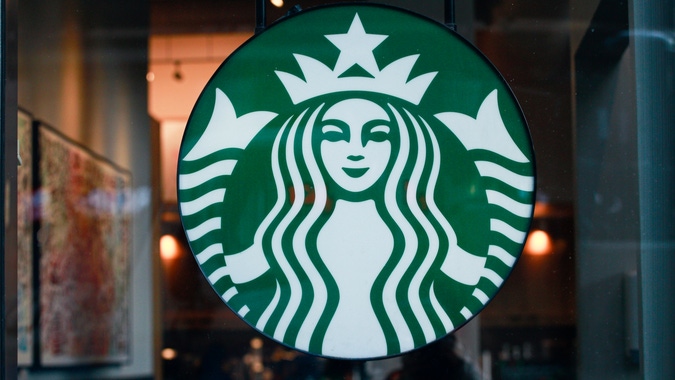Equal Pay Day is March 15, a day that symbolizes how far into the calendar year that women would have to work in order to compensate for how much men earned the year prior as a way of highlighting the pay gap that still exists between men and women.

Kena Betancur/VIEWpres
“The pandemic had an immediate and disproportionate impact on women in the workforce with layoffs, and even as the economy has continued to heal, women still haven’t recovered jobs at the pace of men. Fortunately, we’re seeing large scale adoption of recruiting practices that prioritize diversity, equity, and inclusion, and women will undoubtedly benefit as these become the norm,” Amanda Hahn, Interim CMO at HireVue explains to Entrepreneur. “Most investments in the past have been made on sourcing changes to find female candidates, and although that’s a critical piece of the solution, without ensuring you have a fair and equitable process from start to finish means you could be compromising a substantial investment. Because women earn less, on average, than men, they must work longer for the same amount of pay. The wage gap is even greater for most women of color.”
It can be hard to comprehend that in 2022, this is still an ongoing issue of equality, especially when new candidates are applying for jobs. It goes the same way for recruiters and employers.
Related: It’s Equal Pay Day, and This Twitter Bot Is Calling Out Companies That Pay Men More Than Women
“Candidates are more than just the sum of the bullet points on their resumes. Now more than ever, it is critical to evaluate people based on their skills and capabilities, rather than arbitrary indicators like previous employer, previous job title or school, data points we know are often susceptible to unintentional bias,” Hahn tells us. “HR leaders know all too well that getting diverse team members in the door is just one piece of the puzzle; without a culture of belonging, there’s a never-ending cycle of attrition with the very people you worked so hard to source and hire. The good news is that more companies are taking a more holistic approach — from implementing fairer hiring to more transparent pay scales — because end-to-end shifts are what’s going to drive lasting change.”
Thankfully, many major companies are making moves towards more equality and proportionality when it comes to female employees and their compensation.
Here are five that are doing an exceptional job.
Starbucks
“Starbucks is committed to reaching 100% gender pay equity for all partners in Starbucks company-operated markets globally,” the company said in documents viewed by Entrepreneur. “Starbucks has achieved and maintained 100% pay equity for women and men and people of all races performing similar work in the U.S. As of the end of fiscal 2021, median pay ratio in the U.S. was 100% for women and BIPOC.”
The company has instated in-house three pay equity principles (equal footing, transparency and accountability) as a way to set an example for other companies and as well as hold the company itself accountable for the goals its set surrounding gender pay equity.
As part of these efforts, Starbucks uses an “offer standards calculator” to determine starting pay and does not ask new employees for their compensation history. Pay ranges are also provided to employees who ask for them, the documents explained.
Starbucks also offered paid sick time and family/medical leave on top of ten free days of childcare or eldercare for certain partners to make sure that those who must undertake caretaking responsibilities (predominantly women) can still actively participate in the workforce.
“We are focused on creating a culture of transparency when it comes to pay, and we want all our partners to understand how our compensation programs work—as well as their own pay package. We know this means providing additional education, and we are developing a strategic approach to this across the organization,” Starbucks said. “Pay is an important topic for everyone. Our partners need to be well informed, and our leaders need to be diligent and thoughtful about pay decisions. Partners will never be subject to discrimination or retribution for discussing pay with their manager.
McDonald’s
In October 2021, the fast-food titan achieved equal pay for historically underrepresented groups for corporate employees and company-owned restaurants in the U.S. as well as achieving equally by gender across company-owned U.S. restaurants. By the end of 2022, the company is on track to close all remaining gender pay gaps in both the U.S. and International operated markets.
“While inclusion is a value of ours, and equity an aspiration, we recognize they haven’t always been a reality. This is important because this work is much bigger than McDonald’s,” Heidi Capozzi, McDonald’s EVP and Global Chief People Officer wrote in an email to employees last October viewed by Entrepreneur. “Externally, studies and experts have calculated gender pay gaps in a multitude of ways, but the varying calculations point to a consensus: women consistently earn less than men, and the gap is wider for historically underrepresented groups.”
The company also joined Catalyst Gender and Diversity KPI Alliance as a way to use a set of KPIs to factually measure gender and diversity within the organization, as well as running an annual pay analysis.
“Every day, we will work to diversify our leadership; continue to hire diverse world-class talent; offer the most competitive learning and development programming among our peers; and create formal mentoring and sponsorship programs to accelerate success in our workforce,” Debbie Ballard, McDonald’s Vice President of Global Business Services said. “All of this work elevates who we are and brings our values to life in a very tangible way. I’m proud that McDonald’s is leading the charge, and I’m excited to see the positive change we will create in the future.”
Visa
“Visa believes in equal pay for equal work – men and women earn the same pay for the same work globally, and the same is true for underrepresented employees and their white peers in the U.S.,” Michelle Gethers-Clark, Chief Diversity Officer and Head of Corporate Responsibility at Visa told Entrepreneur. “Ensuring that Visa is a diverse and inclusive environment where different perspectives are valued is a top priority and our executive team regularly reviews our gender and broader diversity metrics to track progress and make sure we are continuing to make Visa a place that our employees want to be.”
The company signed the 2016 Equal Pay Pledge to lock in its commitment to closing the gender wage gap
We believe in equal pay for equal work. That’s why we signed the 2016 Equal Pay Pledge to show our commitment to closing the U.S. gender wage gap, joined other companies to form Employers for Pay Equity and look inside our own walls to make sure Visa is an environment where everyone can thrive.
The company is also a founding member of the Employers for Pay Equity organization which launched in August 2016 that aims to eliminate gaps in both leadership and pay for both women and ethnic minorities.
Meta
“At Meta, it’s our goal that 50% of our workforce will be women by 2024, and I’m proud of the significant steps we’ve taken towards that goal. We’ve worked hard to address representation and equality in our workforce for many years, including growing the percentage of women in technical and leadership roles by 26% over the last five years,” Nicola Mendelsohn, VP Global Business Group at Meta tells Entrepreneur.
The company has been making consistent efforts to recruit and retain women in VR as the company and internet shift toward the metaverse, rolling out a panel on International Women’s Day this year that was hosted by Meta’s Chief Diversity Officer Maxine Williams and featured five female VR creators.
“We have a saying at Meta that ‘nothing is anyone else’s problem.’ To make progress towards gender equality and closing the gap, everyone – including men – needs to be part of the solution,” Mendelsohn explains. “It’s critical to introduce processes and policies that empower everyone to contribute and hold them accountable for reaching these goals.”
Wendy’s
This month, the fast-food chain announced an effort to zero in on franchisees from underrepresented groups, particularly women and people of color.
“One of the big things we saw that was a hindrance was how do we find great women entrepreneurs and how do we narrow the gap in terms of getting them access to capital,” Wendy’s President, Abigail Pringle told Entrepreneur exclusively, explaining that the chain partnered last year with First Women’s Bank, the first women-founded and owned bank based in Chicago. “We’re a mission partner of that bank and they’re helping us find great women entrepreneurs, they’re helping finance some of these new franchisee deals.”
The company also changed its financial requirements for franchisees to make the process and ownership more accessible.
“We realized we weren’t very competitive and it really was a high bar in order to be able to come into the system,” Pringle said. “We can be financially smart and also be more competitive, so we changed our financial requirements for all new or existing franchisees.”





More Stories
Creative Business Ideas That Will Inspire Your Next Move
Business Ideas You Can Start from Home in 2024
5 Innovative Business Ideas to Try Right Now